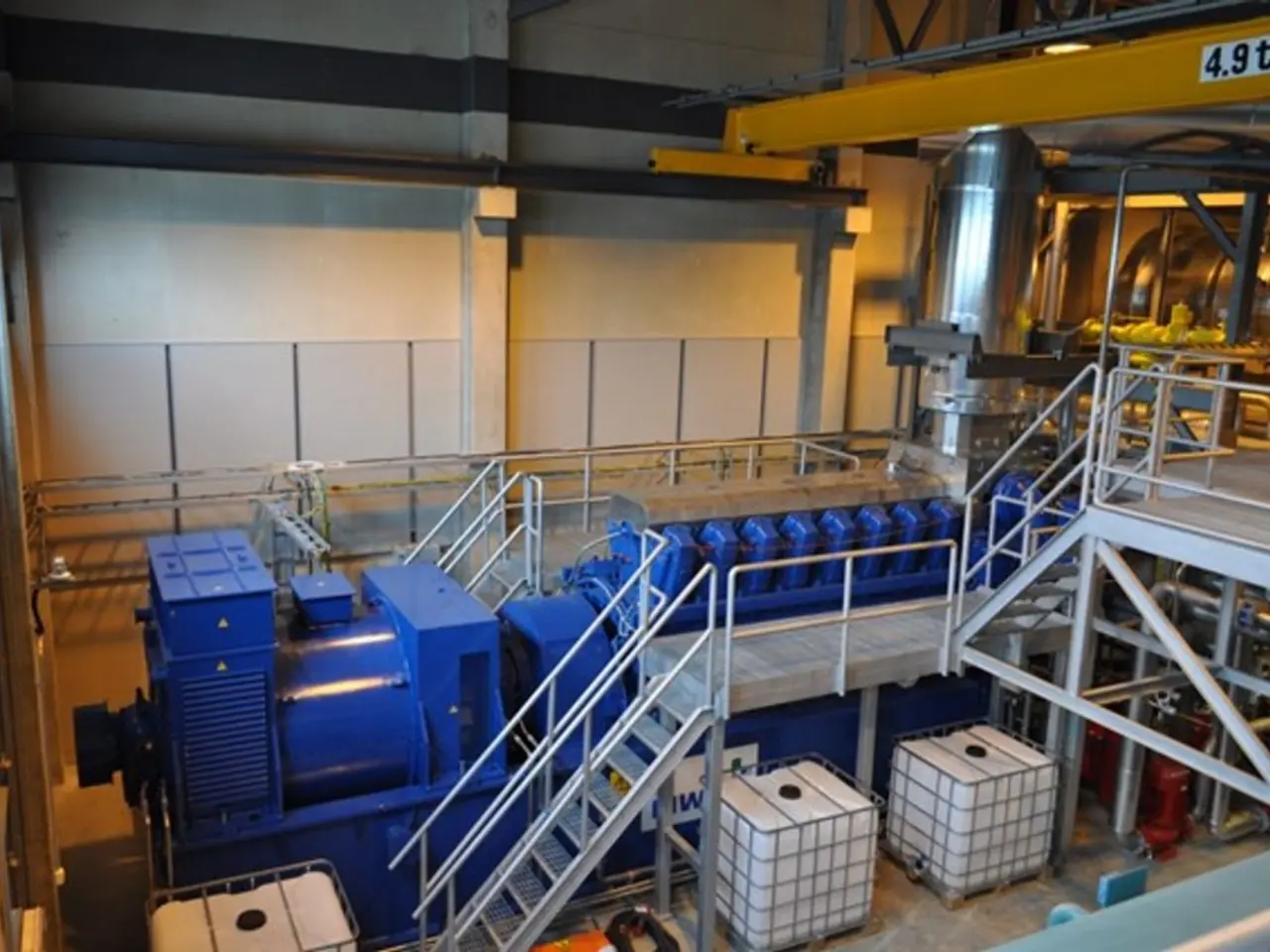Japan's Potential Energy Source: Contemplating the Benefits and Risks of Investing in Alaskan Natural Gas
Alaska LNG Project: A Race Against Time and Cost
The Alaska LNG project, aimed at piping gas from North Slope gas fields to the Kenai Peninsula for liquefaction and export, is currently in an advanced planning stage but not yet under construction [1][3]. The major $44 billion infrastructure plan has been approved, and discussions with Japanese partners are ongoing [1].
Geographical Advantages
The project's location offers several advantages. Proximity to key Asian markets such as Japan, South Korea, and China provides competitive shipping distances compared to Gulf Coast U.S. terminals [3]. The North Slope's abundant natural gas reserves serve as a strong resource base, and the cold climate improves LNG production efficiency compared to hotter regions [4].
Cost and Economic Challenges
Despite these advantages, the project's estimated cost of $44 billion is high, especially when compared to competitors like Canada’s LNG Canada project, which has recently started exports and is nearer to markets via the Pacific Coast [5][2]. Delays for over a decade due to regulatory, leadership, and financing hurdles have hampered the Alaska LNG project's ability to reach market before competitors [1][5].
Market Competition
The Alaska LNG project faces stiff competition. Canadian projects such as LNG Canada, Cedar LNG, and Woodfibre LNG are actively developing or operational and targeting the same Asian markets [2][5]. U.S. LNG producers have multiple export terminals already operational or under construction, rapidly expanding their capacity [5]. Global competitors from Qatar, Australia, Russia (including Arctic LNG projects like Yamal LNG), and other LNG exporters also aggressively target East Asia [2][4].
Demand Outlook in East Asia
While Japan’s long-term LNG demand is uncertain due to renewable energy and hydrogen ambitions, a scenario where targets are unmet still projects LNG demand rising from current levels to as much as 74 million tons by 2040 [3]. This suggests a stable or growing market opportunity, but suppliers must secure long-term contracts amid intense competition [3][2].
The Race Against Time and Cost
The success of the Alaska LNG project depends heavily on securing binding commitments from Asian buyers and possibly government support to overcome historic uncertainties [1][5][3][2][4]. The project's geographical advantage is significant but not unique, as Arctic and Pacific Coast projects also emphasize similar benefits [4]. The project's feasibility in terms of resource base and location notwithstanding, very high costs and delayed timelines pose significant challenges. The window of opportunity for the Alaska LNG project, as presented by Trump's executive order Unleashing Alaska's Extraordinary Resource Potential, is narrow due to Trump's term of office and the approaching net-zero deadline [3].
[1] Alaska Public Media. (2021, March 24). Alaska LNG project advances, but delays and costs persist. Retrieved from https://www.alaskapublic.org/2021/03/24/alaska-lng-project-advances-but-delays-and-costs-persist/
[2] LNG World News. (2021, February 11). Alaska LNG project: What's next after Trump's executive order? Retrieved from https://www.lngworldnews.com/alaska-lng-project-whats-next-after-trumps-executive-order/
[3] Alaska's Energy Desk. (2021, January 26). Alaska LNG project aims for 20 million tons of LNG per year. Retrieved from https://www.energydesk.org/2021/01/26/alaska-lng-project-aims-for-20-million-tons-of-lng-per-year/
[4] Gasworld. (2021, January 26). Alaska LNG project aims for 20 million tons of LNG per year. Retrieved from https://www.gasworld.com/alaska-lng-project-aims-for-20-million-tons-of-lng-per-year/
[5] Natural Gas Intelligence. (2021, January 26). Alaska LNG project aims for 20 million tons of LNG per year. Retrieved from https://www.ngi.com/articles/2021/01/26/alaska-lng-project-aims-for-20-million-tons-of-lng-per-year.html
- The Alaska LNG project, amidst stiff competition from global players, requires binding commitments from Asian buyers and potentially government support to overcome historical uncertainties.
- Despite its location advantages, the project must contend with high costs and timeline delays akin to financial and business challenges.
- The industry is abuzz with the development of other LNG projects in Canada (LNG Canada, Cedar LNG, Woodfibre LNG) and the United States, which target the same Asian markets.
- The Alaska LNG project's feasibility relies on its abundant natural gas reserves and cold climate enhancing LNG production efficiency, though these factors do not uniquely set it apart from other Arctic and Pacific Coast projects.
- Market analysis predicts that East Asian demand for LNG, although uncertain due to renewable energy and hydrogen ambitions, could rise to as much as 74 million tons by 2040, offering a stable or growing market opportunity, but with intense competition for securing long-term contracts.
- In the race against time and cost, the success of the Alaska LNG project could be influenced by its ability to secure such commitments and navigate the complexities of the global LNG market, banking on its unique geographical advantages to attract investors.




